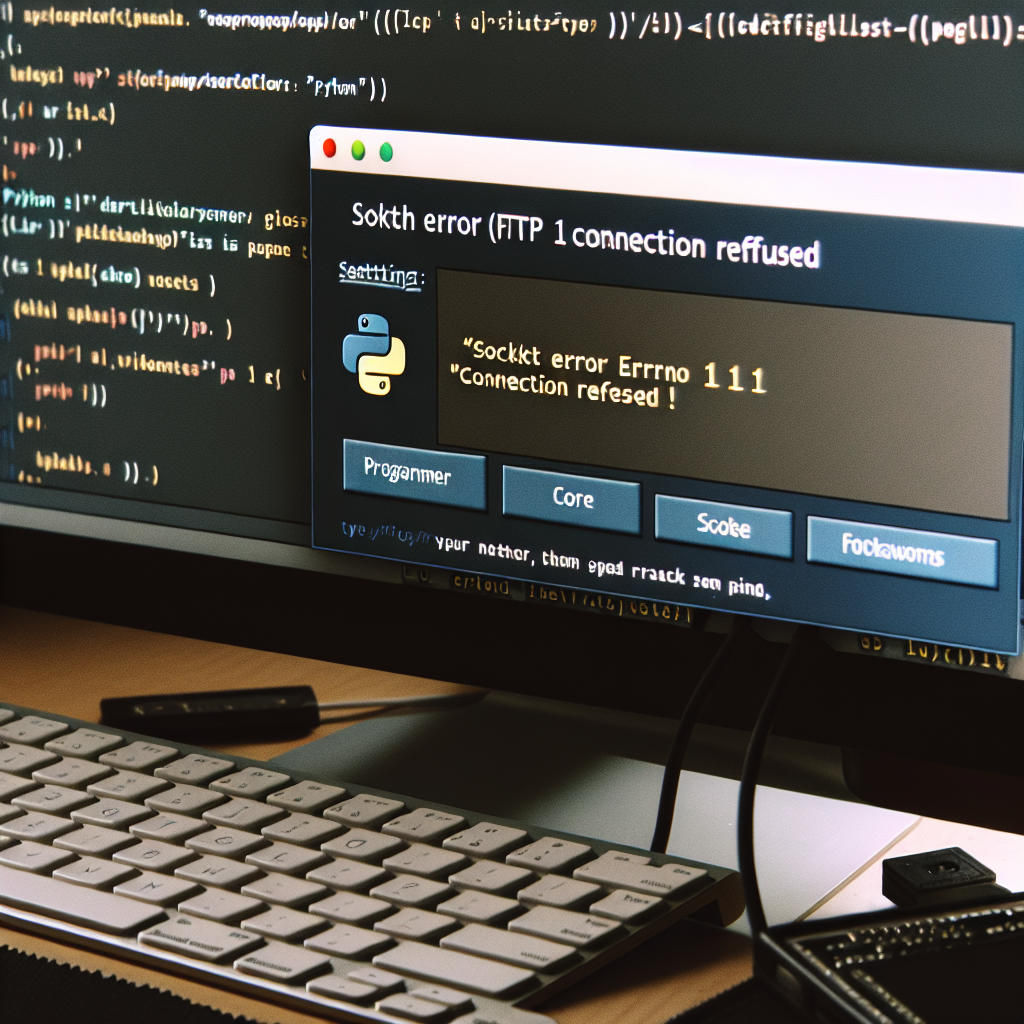Introduction

When working with network applications in Python, encountering socket errors can be a common occurrence. Among these, the Socket Error Errno 111 Connection Refused is a frequent hurdle for developers, especially when dealing with FTP (File Transfer Protocol) operations. This error indicates that a connection attempt was made, but the target machine actively refused it. In this article, we will delve into the intricacies of this error, exploring its causes, solutions, and best practices to prevent it from occurring in your Python FTP applications.
Understanding Socket Error Errno 111 in Python
What is a Socket Error?
A socket error occurs when data transmission over a network fails, and the software is unable to access or connect to a server or host. In Python, this is often represented by an exception that provides details about the nature of the error.
Decoding Errno 111: Connection Refused
The Errno 111 error specifically signifies that a connection attempt was rejected by the server or the host. This can happen for various reasons, such as the server not being active, network issues, or firewall restrictions.
Common Causes of Connection Refused Error
- Server is not running on the specified host or port
- Firewall blocking the connection
- Network issues between the client and server
- Incorrect client configuration
- Server overload or crash
Diagnosing the Connection Refused Error
To resolve the Errno 111 error, it’s crucial to diagnose the root cause. This involves checking server status, verifying firewall settings, and ensuring correct client configurations.
Resolving the Error in Python FTP Applications
Checking Server Availability
Ensure that the FTP server is running and listening on the expected port. You can use tools like netstat or nmap to verify this.
Configuring Firewall Settings
Adjust firewall settings to allow incoming connections on the FTP port. This might involve adding rules to accept traffic on port 21, which is the default FTP port.
Ensuring Correct Client Configuration
On the client side, make sure that the host and port specified in the Python script match the server’s settings. Also, check for any typos or incorrect parameters.
Best Practices to Avoid Connection Refused Errors
- Always validate server status before attempting a connection.
- Regularly update firewall rules to match the services in use.
- Monitor network health and troubleshoot any irregularities promptly.
- Implement error handling in your Python code to manage exceptions gracefully.
Case Study: Troubleshooting Errno 111 in a Real-World Scenario
Consider a scenario where a Python application fails to connect to an FTP server, throwing the Errno 111 error. The developer checks the server status, confirms the firewall settings, and reviews the client configuration. After ensuring all settings are correct, they discover that the server was temporarily down due to maintenance, which was the cause of the error.
FAQ Section
What should I do if I encounter Errno 111 in my Python application?
First, verify that the FTP server is running and accessible. Check your firewall settings and ensure your Python client is configured correctly.
Can Errno 111 be caused by an issue on the client side?
Yes, if the client is configured with the wrong host or port, or if there’s a local network issue, Errno 111 can occur.
Is Errno 111 specific to FTP applications?
No, Errno 111 can occur with any network application that uses sockets, not just FTP.
Conclusion
The Socket Error Errno 111 Connection Refused in Python FTP applications is a common network issue that can be resolved with proper diagnosis and configuration. By understanding its causes and implementing best practices, developers can ensure reliable network communication in their Python applications.
References
For further reading and advanced troubleshooting, consider the following resources:

